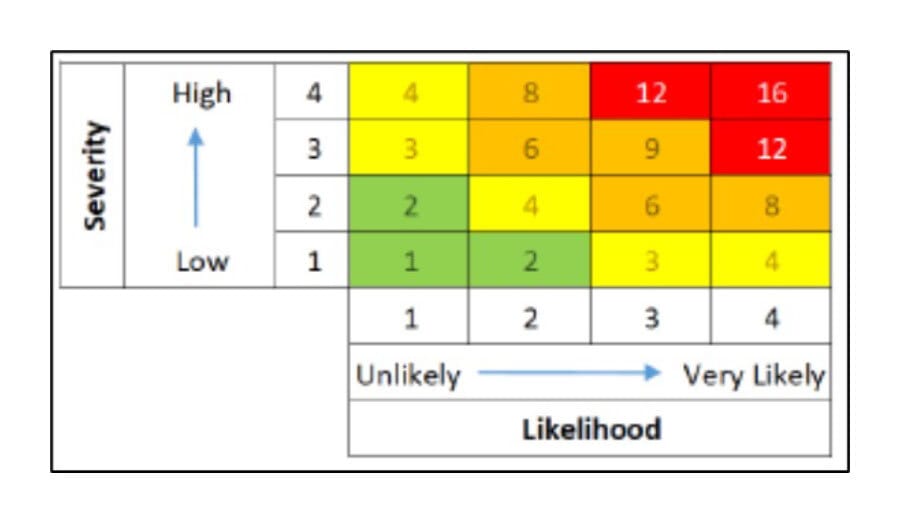2. American Institute of Chemical Engineers, “Dust explosion mitigation using Q-Rohr and exkop,” https://aiche.onlinelibrary.wiley.com/doi/abs/10.1002/prs.680170306 https://doi.org/10.1002/prs.680170306, Published June 17, 2004, Accessed August 11, 2023.
3. American Society of Safety Engineers, (Currently the American Society of Safety Professionals), SafelyMade Technical Publication, Volume 1 Issue 3, Pages 4 and 6, HouseKeeping, “Combustible Dust Cleaning, A Professional Approach” https://wp.me/p6HBj6-6c Published 2010, Accessed August 11, 2023.
4. Canadian Center for Occupational Health and Safety, C.C.O.H.S), “Chemicals and Materials, Combustible Dust,” https://www.ccohs.ca/oshanswers/chemicals/combustible_dust.html#:~:text=Only%20use%20a%20dust%20collection,air%20and%20worsening%20the%20situation Published June 13, 2023, Accessed August 11, 2023.
5. Centers for Disease Control and Prevention, (C.D.C.), “Control of Drywall Sanding Dust Exposures,” https://www.cdc.gov/niosh/docs/99-113/default.html Published June 6, 2014, Accessed August 5, 2023.
6. Cloney, Dr. Chris (2022), Dust Safety Science, “2021 Combustible Dust Incident Report - Version #1,” DustEx Research Ltd., Retrieved from https://dustsafetyscience.com/2021-report-summary/ Published 2022, Accessed August 11, 2023.
7. Cloney, Dr. Chris (2023), Dust Safety Science, “2022 Combustible Dust Incident Report - Version #1,” DustEx Research Ltd., Retrieved from https://dustsafetyscience.com/2021-report-summary/ Published 2023, Accessed January 3, 2024.
8. Elsevier Ltd., Building and Environment, Volume 143, 1 October 2018, Pages 513-522, “Contribution of metals in resuspended dust to indoor and personal inhalation exposures: Relationships between PM10 and settled dust,” https://www.sciencedirect.com/science/article/pii/S0360132318304529 Published October 1, 2018, Accessed August 11, 2023 https://doi.org/10.1016/j.buildenv.2018.07.044
9. Elsevier Ltd., Journal of Cleaner Production, Volume 295, 1 May 2021, 126488, “Experiments and simulations of human walking-induced particulate matter resuspension in indoor environments,” https://www.sciencedirect.com/science/article/abs/pii/S0959652621007083 Published May 1, 2021, Accessed August 11, 2023 https://doi.org/10.1016/j.jclepro.2021.126488
10. Elsevier Ltd., Atmospheric Environment, Volume 89, June 2014, Pages 464-481, “Walking-induced particle resuspension in indoor environments,” https://www.sciencedirect.com/science/article/abs/pii/S1352231014001319 Published June 2014,, Accessed August 11, 2023 https://doi.org/10.1016/j.atmosenv.2014.02.035
11. Hallam- ICS, (Dust Hazard Analysis, Tables and Charts attached to this article): https://www.hallam-ics.com/sample-dust-hazard-analysis-report Published January 2023, Accessed January 2024.
12. National Fire Protection Association, (N.F.P.A.), “NFPA Glossary of Terms,” https://www.nfpa.org/~/media/Files/Codes%20and%20standards/Glossary%20of%20terms/glossary_of_terms_2021.ashx Published March 30, 2021, Accessed August 11, 2023.
13. National Fire Protection Association, (N.F.P.A.), “652 Standard on the Fundamentals of Combustible Dust,” https://www.nfpa.org/codes-and-standards/6/5/2/nfpa-652 January 2019, Accessed January 2024.
14. National Fire Protection Association, (N.F.P.A.), “654 Standard for the Prevention of Fire and Dust Explosions from the Manufacturing, Processing, and Handling of Combustible Particulate Solids,” https://www.nfpa.org/codes-and-standards/all-codes-and-standards/list-of-codes-and-standards/detail?code=654 January 2020, Accessed August 11, 2023.
15. National Center for Biotechnical Information, National Library of Medicine, PubMed Central, “A comparative study of walking-induced dust resuspension using a consistent test mechanism,” https://pubmed.ncbi.nlm.nih.gov/24605758/ Published 2014 Dec;24(6):592-603. doi: 10.1111/ina.12107. Epub 2014 Apr 9, Accessed August 11, 2023.
16. National Center for Biotechnical Information, National Library of Medicine, PubMed Central, “Potential Explosion Hazard of Carbonaceous Nanoparticles: Screening of Allotropes,” https://www.ncbi.nlm.nih.gov/pmc/articles/PMC4959120/ Published Combust Flame. 2016 May; 167: 218–227. doi: 10.1016/j.combustflame.2016.02.010, Accessed August 11, 2023.
17. National Center for Biotechnical Information, National Library of Medicine, PubMed Central, “Understanding the pathogenesis of occupational coal and silica dust-associated lung disease,” https://www.ncbi.nlm.nih.gov/pmc/articles/PMC9724915/ Published online 2022 Jul 13. doi: 10.1183/16000617.0250-2021, Accessed August 1, 2023.
18. U.S. Chemical Safety Board, (C.S.B.), and Hazard Investigation Board, “Call to Action: Combustible Dust,” https://www.csb.gov/assets/1/20/call_to_action_-_final.pdf Published October 24, 2018, Accessed August 11, 2023.
19. U.S. Chemical Safety Board, (C.S.B.), and Hazard Investigation Board, “Combustible Dust Safety,” https://www.csb.gov/assets/1/6/csb_cdl_fact_sheet_-_combustible_dust.pdf Published April 2018, Accessed August 11, 2023.
20. U.S. Chemical Safety Board, (C.S.B.), and Hazard Investigation Board, “Dust Incidents 2006-2017,” https://www.csb.gov/assets/1/17/csb_dust_incidents.pdf?16406 Published October 2018, Accessed August 11, 2023.
21. U.S. Department of Labor, Mine Safety and Health Administration, PROGRAM POLICY LETTER NO. P13-V-11, “Program for Regular Cleanup and Removal of Accumulations of Coal and Float Coal Dust, Loose Coal, and Other Combustibles,” https://www.msha.gov/p13-v-11 Published December 18, 2013, Accessed August 11, 2023.
22. U.S. Department of Labor, Occupational Safety and Health Administration, (O.S.H.A.), “Combustible Dust in Industry: Preventing and Mitigating the Effects of Fire and Explosions,” https://www.osha.gov/publications/shib073105 Published November 12, 2014, Accessed August 11, 2023.
23. U.S. Department of Labor, Occupational Safety and Health Administration, (O.S.H.A.), “Classification of Combustible Dusts under the Revised Hazard Communication Standard. [1910.1200; 1910.1200(d)],” https://www.osha.gov/laws-regs/standardinterpretations/2013-12-27#11 Published December 27, 2013, Accessed August 11, 2023.
24. U.S. Department of Labor, Occupational Safety and Health Administration, (O.S.H.A.), “Hazard Communication Guidance for Combustible Dusts,” https://www.osha.gov/sites/default/files/publications/3371combustible-dust.pdf Published OSHA 3371-08 2009, Accessed August 11, 2023.
25. U.S. Department of Labor, Occupational Safety and Health Administration, (O.S.H.A.), OSHA Notice “DIRECTIVE NUMBER: TED-01-00-015 SUBJECT: OSHA Technical Manual – Section IV, Chapter 6, Combustible Dusts,” https://www.osha.gov/sites/default/files/otm_secIV_chap6.pdf Published February 10, 2020, Accessed August 11, 2023.
26. Wikipedia, Wikipedia Foundation Inc., “Ohmmeter,” https://en.wikipedia.org/wiki/Ohmmeter Published July 28, 2023, Accessed August 5, 2023.
27. Wikipedia, Wikipedia Foundation Inc., “Dust Explosions,” https://en.wikipedia.org/wiki/Dust_explosion Published June 27, 2023, Accessed August 5, 2023.
28. Zheng, S., Du, W., Zhao, L. et al. Effect of Relative Humidity on Resuspended Particles Caused by Human Walking. J. Shanghai Jiaotong Univ. (Sci.) 25, 365–371 (2020). https://doi.org/10.1007/s12204-020-2176-1




